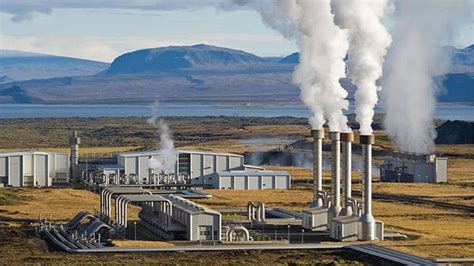In the search for sustainable energy solutions, the marriage between fusion technology and geothermal energy presents an interesting yet largely speculative frontier. The excitement around this potential is palpable, as it promises to unlock the vast energy reserves stored beneath the Earth’s crust. However, amid the enthusiasm, it remains crucial to highlight the technology’s maturity and the pragmatic challenges that lay ahead. The latest advancements suggest that, while the drilling phase has seen progress, a multitude of variables needs careful consideration before fusion-powered geothermal energy becomes a commercial reality.
One of the foremost hurdles in this integration is the technical viability of drilling deep wells. Traditional mechanical drills have faced significant limitations beyond a certain depth due to extreme temperatures and rock pressures. As pointed out by one commenter, the deepest geothermal wells, such as those drilled by Utah FORGE, reach a maximum of around 3 km. To harness deeper geothermal potential, we will need to substantially innovate or shift to non-mechanical drilling technologies such as those employed by Quaise Energy, which uses microwave drilling techniques.
The logistics of maintaining and operating such deep wells also pose a severe challenge. The geological formation at depths greater than 3 km starts to behave plastically, which makes maintaining the borehole integrity a complicated affair. Traditional well drillers manage downhole pressure effectively using drilling mud, but new techniques must be developed to handle rock vaporization and simultaneous pressure management. As a point raised by another user, there are significant safety considerations, such as avoiding boiling liquid expanding vapor explosions (BLEVEs) and potential blowouts, which could parallel hydrocarbon drilling incidents like the BP Deepwater Horizon disaster.
The material science aspect of this endeavor is equally pressing. The pipes and other infrastructure materials need to withstand extreme temperatures and pressures at such depths. While steel is a common choice, its durability under such conditions is still a concern. As one commenter succinctly put it, ‘What do you make the pipes out of that do not get destroyed from living at those depths?’ This question lingers even as materials such as graphite dust in XGS Energy’s fluid promise to enhance thermal conductivity and might offer a solution.
Moreover, the environmental implications of such deep drilling cannot be overstated. Geothermal energy, while largely clean, presents risks including induced seismic activity and potential contamination of groundwater. Some users have asked about the long-term effects of extensive geothermal drilling and how thermal diffusivity might impact the Earth’s crust over centuries of sustained energy extraction. There are valid concerns about not just the immediate technological hurdles but also the broader ecological footprint of such undertakings.
Interestingly, there is an argument to be made for geothermal energy serving as a transitional project for the oil and gas sector. Several comments highlight that the skills and technologies from petroleum drilling are directly applicable to geothermal energy. This could not only offer a new lease on life for an existing workforce but also leverage established drilling expertise to advance renewable energy solutions. As noted by a user, ‘Globally viable geothermal power generation would be an absolute game changer for fighting climate change,’ provided we can transition smoothly by retraining the existing labor force and repurposing their skills.
Economic factors also play a crucial role in determining the feasibility of fusion-powered geothermal energy. With a high capital intensiveness and lengthy timelines, investments in such projects are inherently risky. The present focus on fast, scalable tech investments like SaaS and short-term returns in the venture capital space might overshadow potentially game-changing technologies that require substantial funding and patience. For geothermal energy to move beyond research initiatives like Utah FORGE and into large-scale commercial deployment, substantial financial support and a clear regulatory framework are paramount.
In conclusion, while fusion technology’s application in geothermal energy holds disruptive potential, it comes with its share of challenges. From the technical feasibility of drilling and maintaining wells to the economic and ecological considerations, the path ahead is fraught with uncertainties. Yet, the promise of tapping into a near-limitless, clean energy source remains a tantalizing prospect. For those willing to invest both time and resources, the integration of fusion technology in geothermal energy could indeed be the cornerstone of a sustainable energy future. However, this vision requires rigorous scientific, engineering, and economic scrutiny to translate into reality.


Leave a Reply